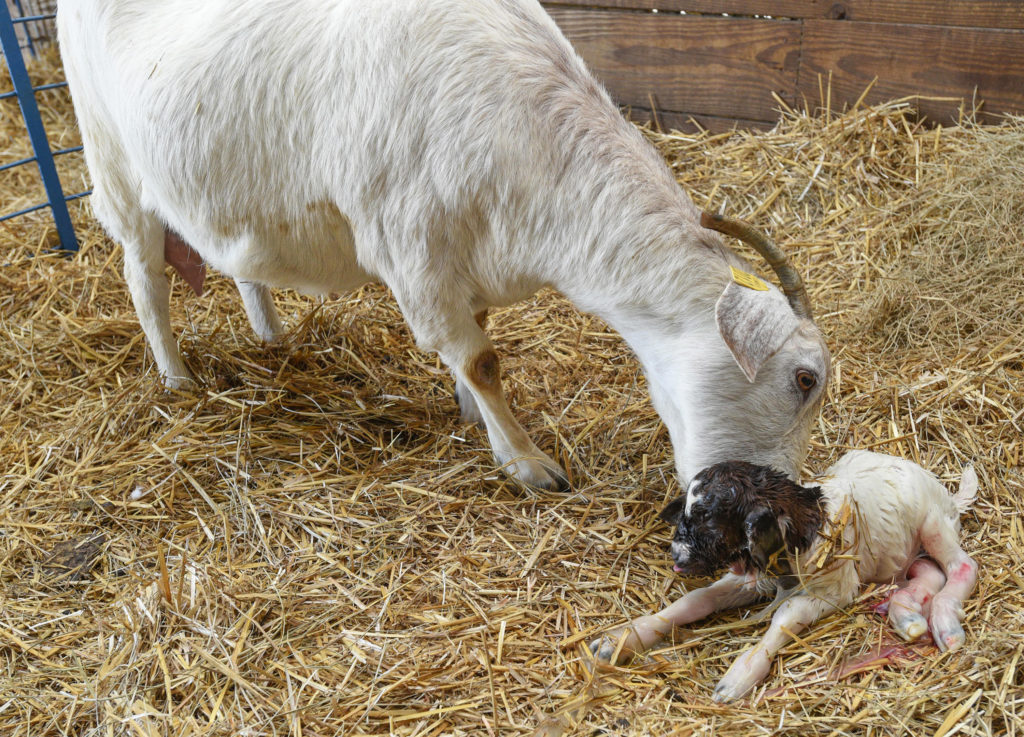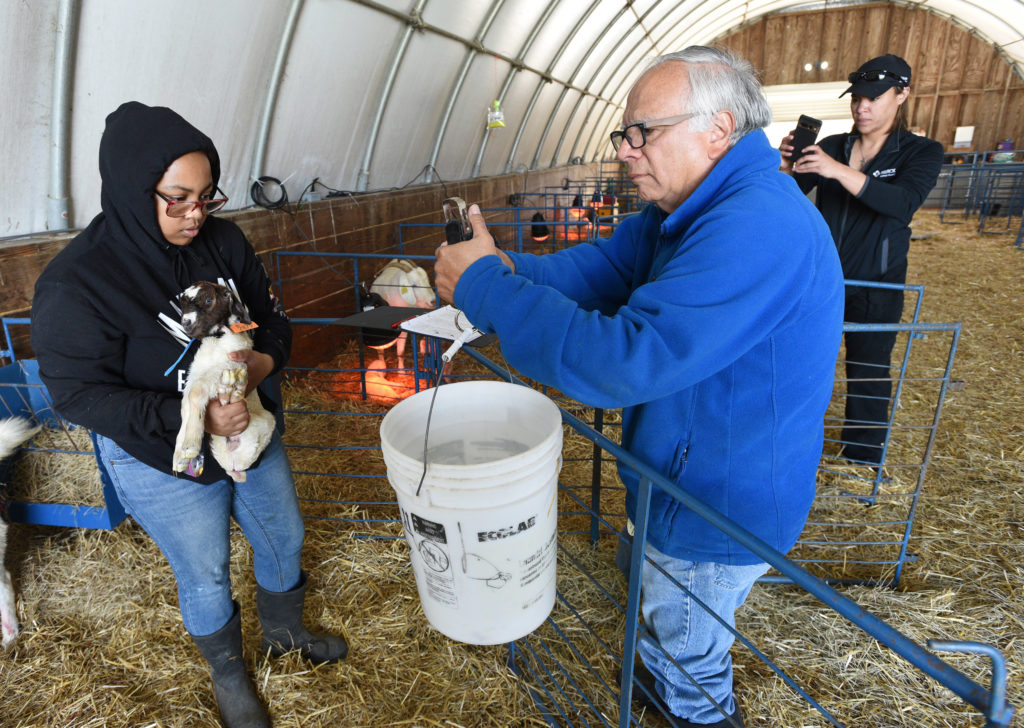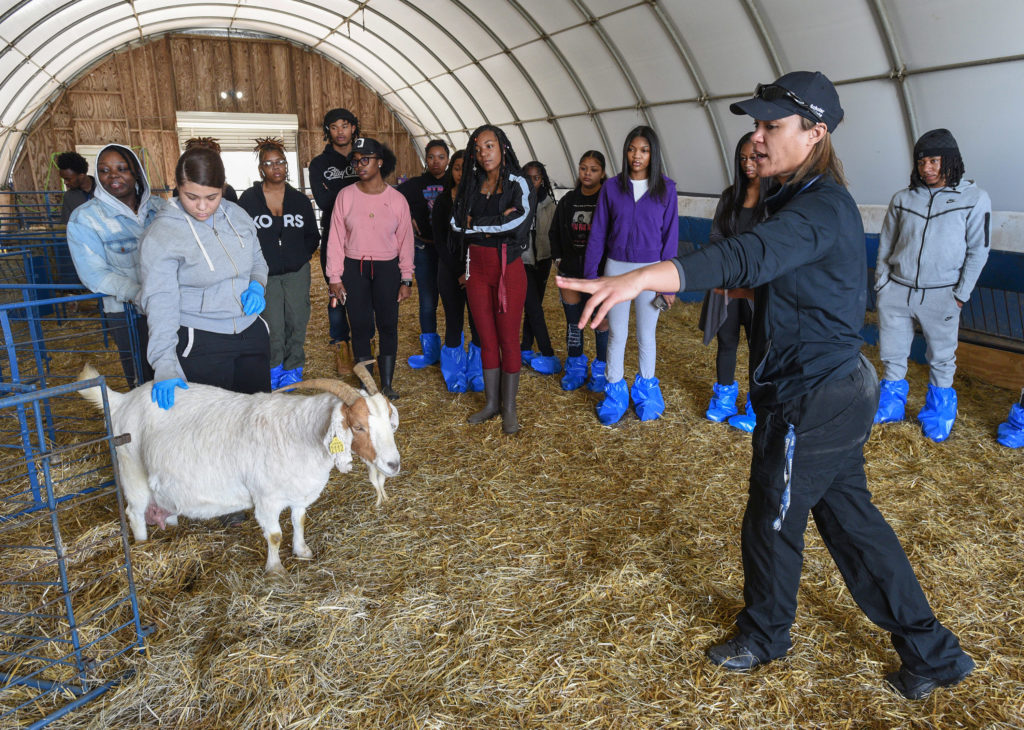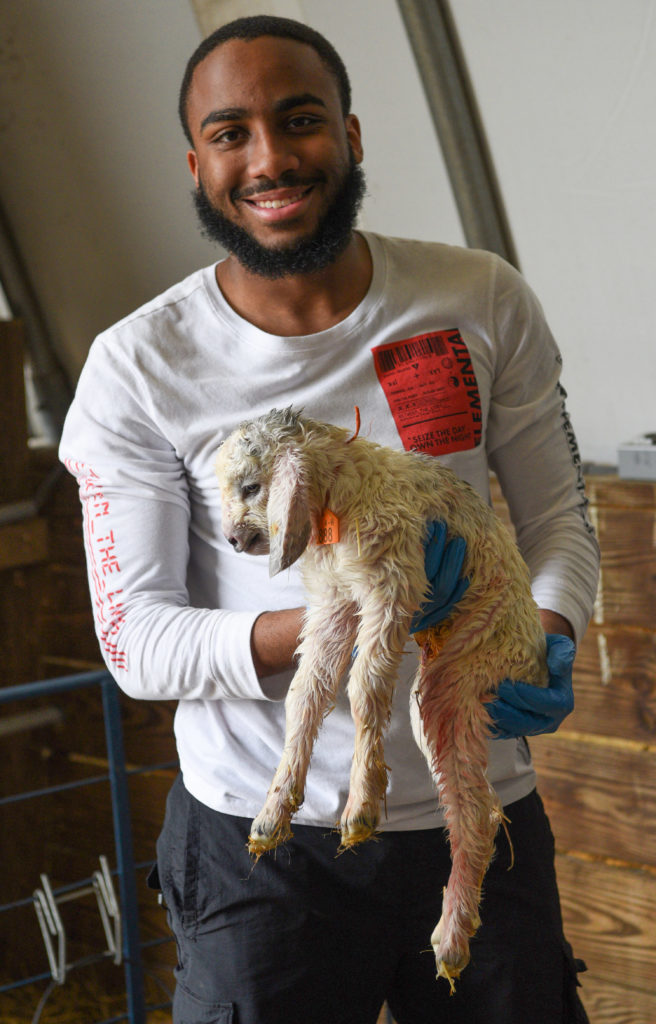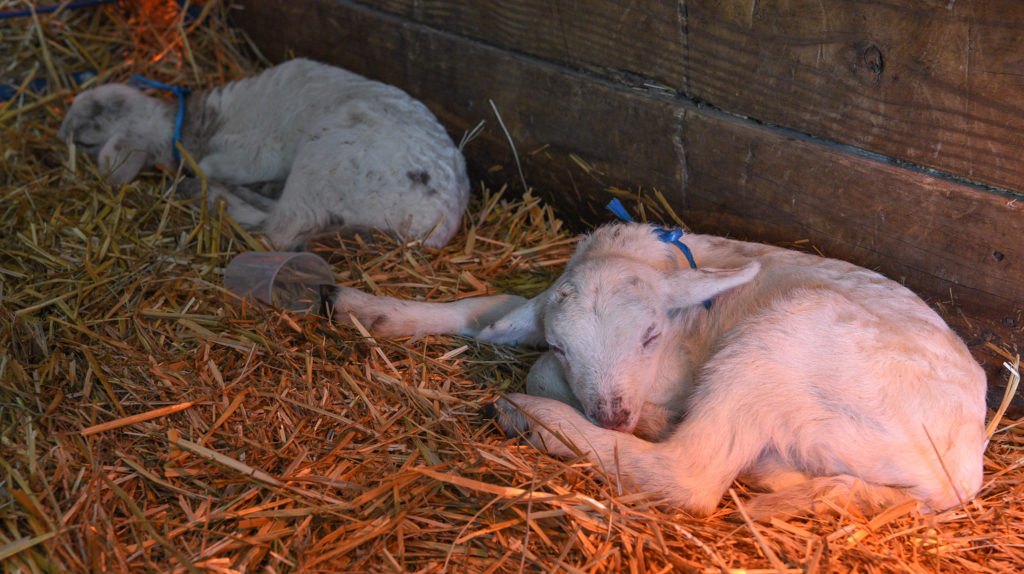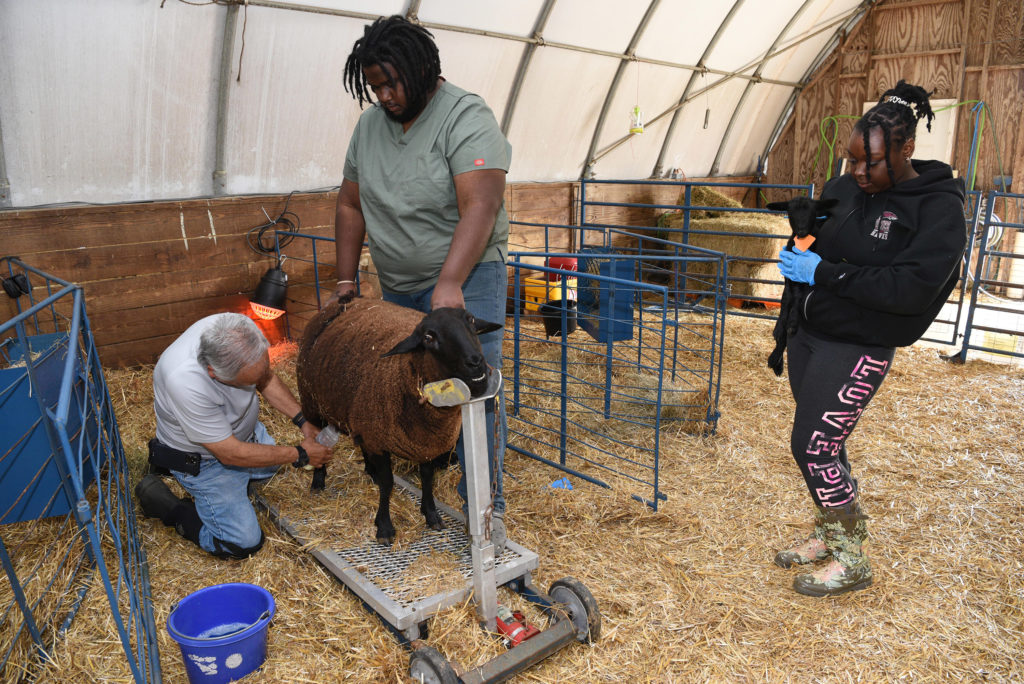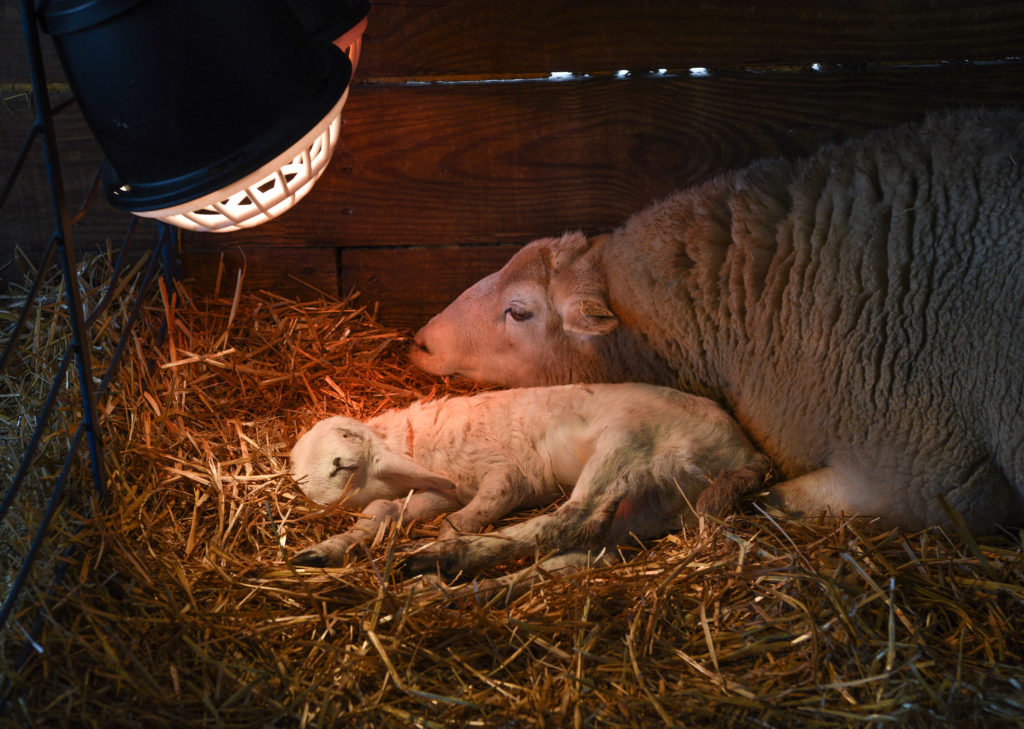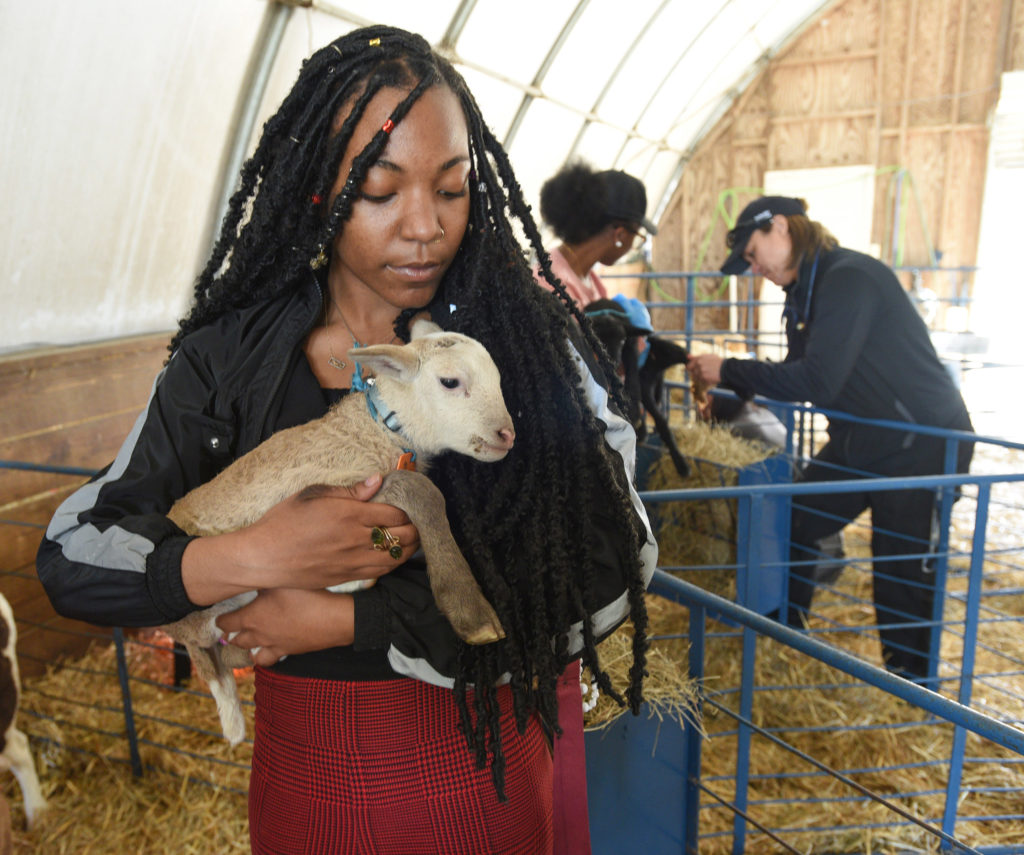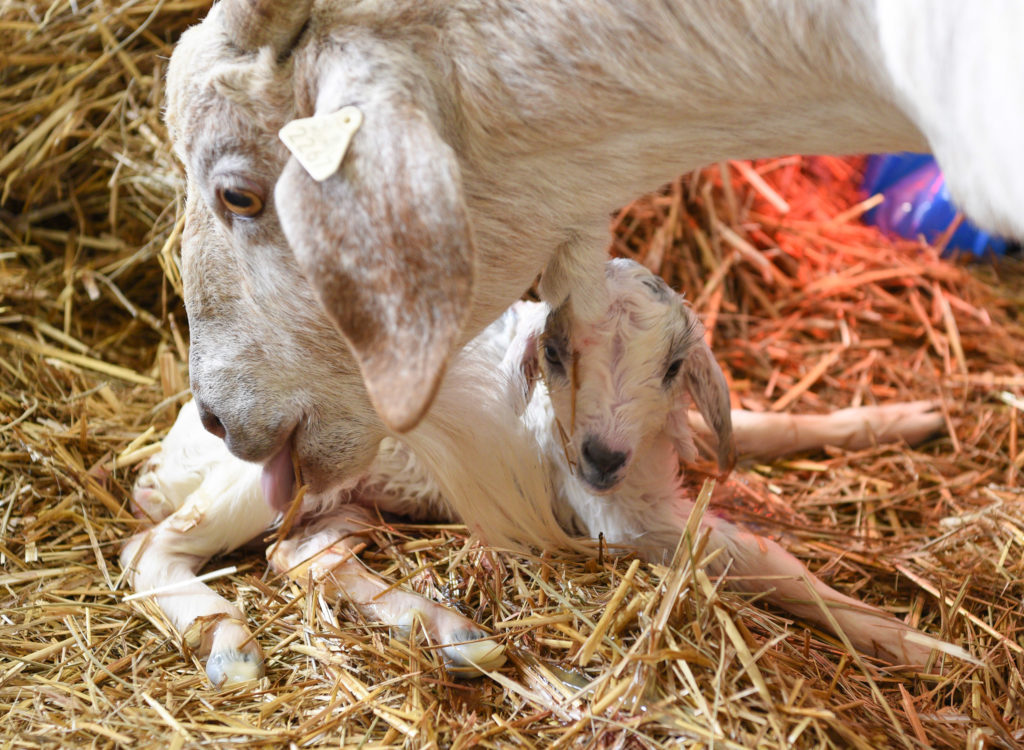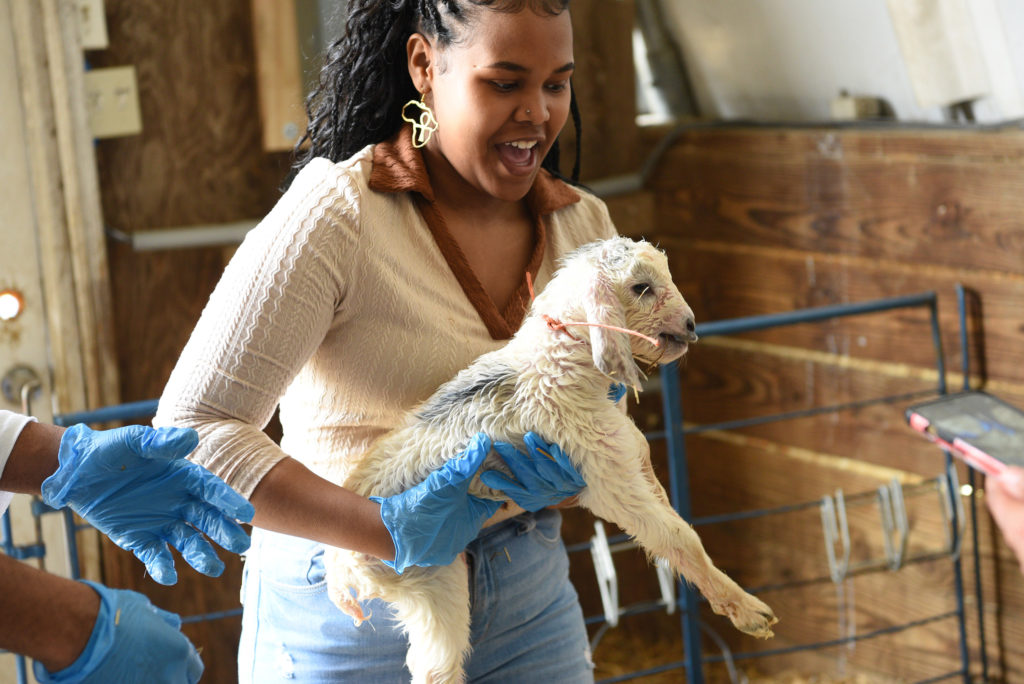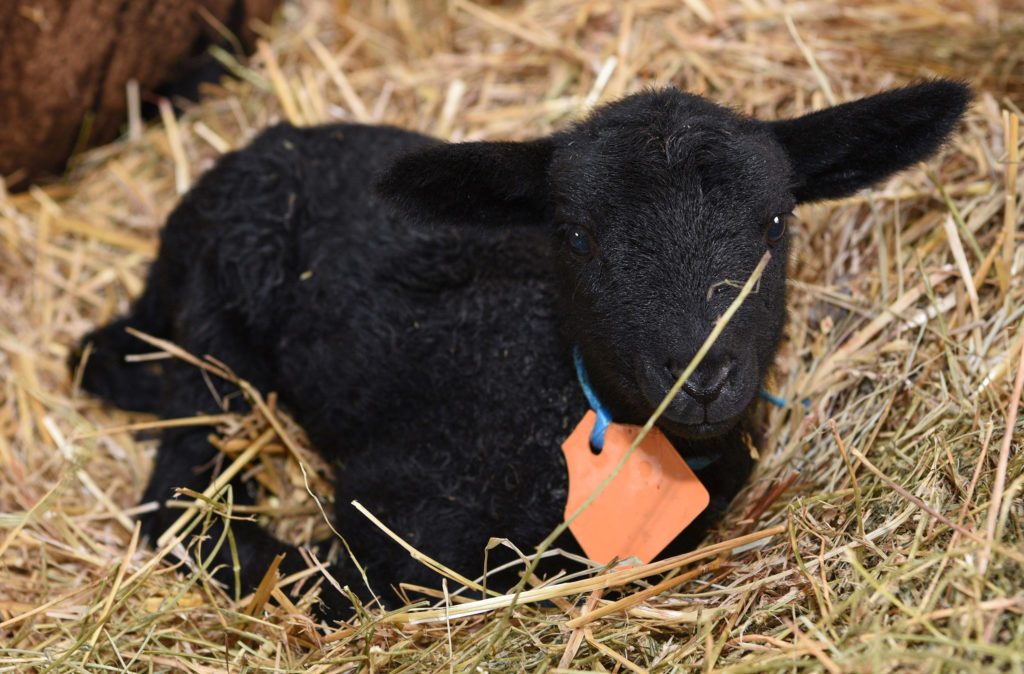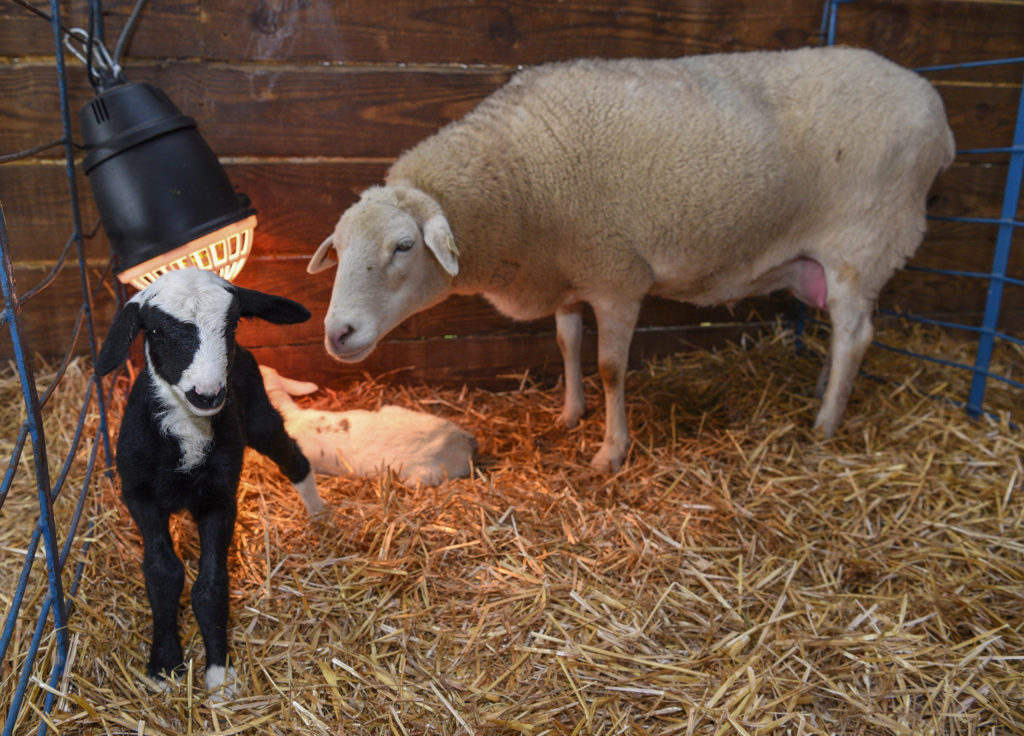
With the exception of pollen creating a yellow carpet on EVERYTHING on Delmarva, the arrival of spring is a welcome time, especially on the UMES campus. For two weeks, typically the last week of March and first week of April, it’s lambing and kidding season with lambs and kids being born (and cuddled) through UMES Extension’s Small Ruminant Program.
This year in the birthing barn, which also serves as practicum for the school’s pre-vet program, nine lambs and 31 kids were ushered into the world. Some entered with a partner, as there were multiple does that had twins or triplets. One doe had tri-colored triplets — one tan, one black and one white. One potential bottle baby was adopted instead by Bertha, the farm’s “oldest and nicest” ewe according to fourth-year UMES Pre-Vet student Carlien Brown.
It was a year notable for an increased number of kids versus lambs, said E. Nelson Escobar, (at left) associate dean for extension, and associate professor and small ruminant specialist at UMES. In past years, lambs outnumbered kids.
“For more than a decade, the estrus synchronization approach that we practice has functioned well, with lambing and kidding occurring in 10 days,” Escobar said. “Another benefit of the practice is that we have a very uniform crop of lambs and kids, which facilitates feeding, vaccination, castration and other post-birth activities.”
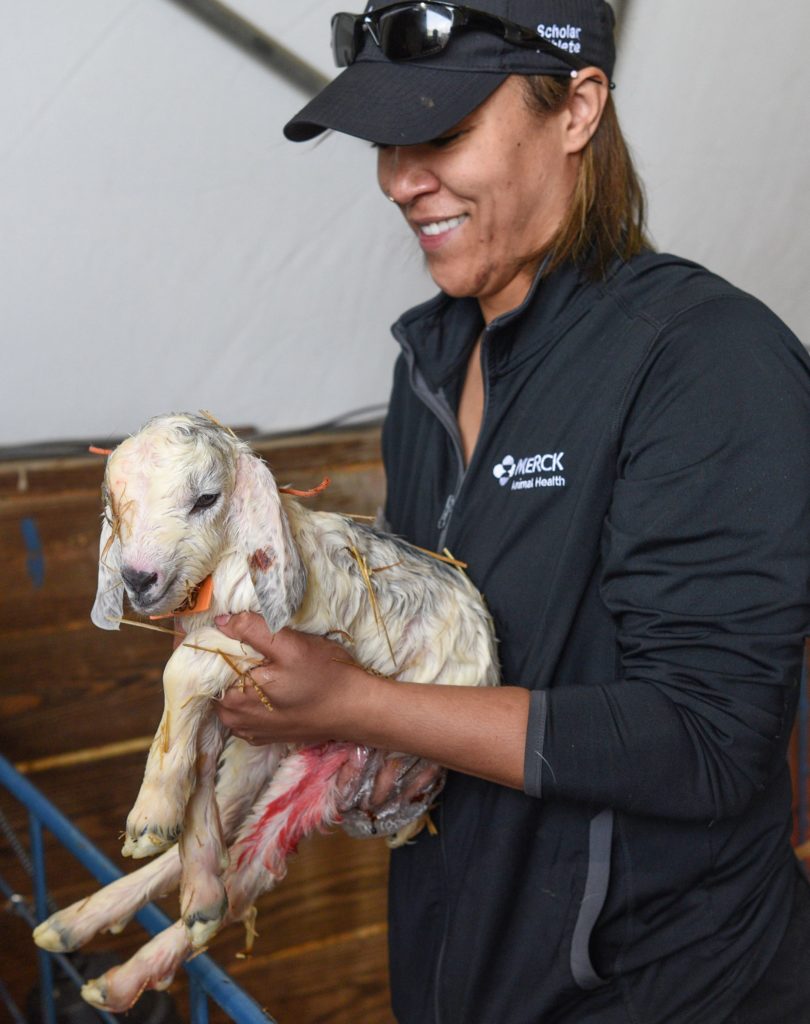
Typically, in October, the ewes and does are synchronized using a procedure validated by Escobar and a former graduate student. Then, the first week of November, two rams and two bucks join the herd of does and ewes for 10 days. After 35 days post breeding, a blood sample is taken from the exposed females and sent to a laboratory for pregnancy confirmation (BioPRIN®), and those that are not pregnant are returned to the pasture. Prenatal care over the approximated five-month gestation period is overseen by UMES Extension student workers and the campus veterinarian and Pre-Vet Program advisor, Dr. Kimberly Braxton (at right). One month before the lambing date, the ewes and does are watched around – the – clock and the lambing bucket is kept close by with all the tools needed to assist (only if needed) and help clean the little ones post birth.
When the lambs and kids are born, data such as the mother’s identification number, the number of siblings born in the litter, sex and birth weight is recorded. After five to six weeks, the newborns are “welcomed to the herd/flock” by receiving an ear tag (right for female, left for male). Students who prove they have the facility and ability to care for the babies have also been known to adopt.
The dams and their offspring are put in lambing/kidding pens, private areas in the barn, to enable them to bond and for the other ewes/does not to interfere or interrupt. Straw bedding is replaced regularly and the mother’s nutritional care is adjusted to meet requirements. If the temperature is cool outside, the furry little bodies huddle under the glow and warmth of heating lamps. They will remain in the lambing/kidding pens for up to 14 days, then it’s “release day!” Mothers and their babies are released from their pens to roam about the birthing barn.
“It’s quite a sight to see as all the newborns test out their legs by performing side-kick bunny hops inside the birthing barn,” Braxton said. “They will stay inside until old enough to wean and vaccinate.”
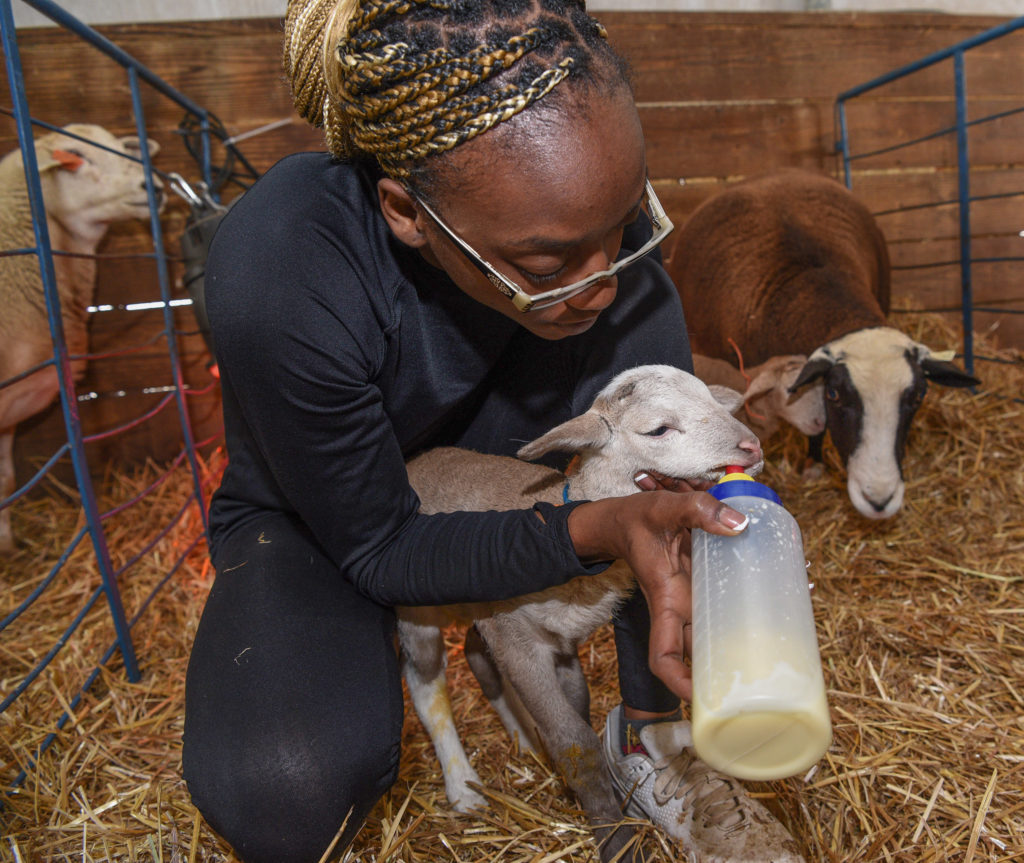
“Providing this practicum for our students is such a positive experience for both the students and myself. When they get to be directly involved in the birthing process, I can actually see the spark they have for this profession ignite! Very stoic faces of today’s young adults become literally joyful and amazed,” Braxton said. “UMES is training the next generation of minority/underrepresented veterinarians, it’s just an honor to be a contributing part.”
“Lambing/kidding season can be a busy and sometimes gross time on the farm. However, being up close to help Drs. Braxton and Escobar, and even the mother at times, softened my take on the subject of reproductive health,” said third-year transfer Pre-Vet student Shamia Onley (at left). “Assisting the mother by giving her an extra hand to help push her newborn out and having the hands-on experience was pretty cool.”
Gail Stephens, agricultural communications and media associate, University of Maryland Eastern Shore, School of Agricultural and Natural Sciences, UMES Extension, gcstphens@umes.edu, 410-621-3850.
Photos by Todd Dudek, agricultural communications, University of Maryland Eastern Shore, School of Agricultural and Natural Sciences, UMES Extension, tdudek@umes.edu.
Watch a video of a goat giving birth on the UMES campus farm HERE!



